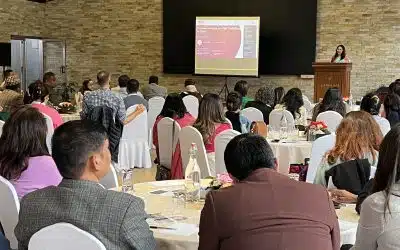InAsia
Insights and Analysis
Looking Back as May 2010 Philippine General Elections Approach
April 28, 2010
In the Philippines, there is a well-known saying by Jose Rizal:
Ang hindi lumilingon sa pinanggalingan ay Hindi makararating sa paroroonan.
“One who does not look back from where she came will never reach her destination.”
So, as we prepare for the May 10 general elections here, we should review the past – but how far back need we go? The history of elections in the Philippines stretches back to the July 1907 elections to the Philippine Assembly. Having elections that long ago – before the regularization of a Filipino bureaucratic structure – is important to note because it means that Philippine civil servants have, since 1907, always been susceptible to politicization. This has contributed to the weak state structure that we have today.
Elections in the Philippines have long been controversial. For instance, the election of 1949 (incidentally, the year I was born) was condemned as particularly dirty since the military was used against the opposition (producing a sweep for the Liberal Party).
But the Philippines is a very personalistic country, so rather than start at the very beginning, let me start at my beginning. I arrived in the Philippines just in time for the 1981 presidential election, in which then-President Ferdinand Marcos had lifted martial law to win more than 90 percent of the votes against former Defense Secretary Alejo Santos (a genuine World War II hero, running under the banner of the Nacionalista Party). During the subsequent inauguration ceremony, U.S. Vice President George H.W. Bush declared, “We love your adherence to democratic principles and to the democratic process, and we will not leave you in isolation.”
Marcos’ total domination didn’t last forever. The upsurge of opposition activity after the assassination of Senator Ninoy Aquino was reflected in the 1984 election results for the Batasang Pambansa (National Legislature), where the opposition won over one-third of the vote. This deprived the ruling Kilusang Bagong Lipunan (New Society Movement) of a two-thirds majority in the legislature, leaving President Marcos to muse ruefully that perhaps his subordinates had taken too seriously the instructions to allow a fair vote.
Which leads us to the presidential “snap” election of February 1986, when Ferdinand Marcos attempted to cheat his way to victory. While it is difficult to say for sure what opposition candidate Corazon Aquino’s margin was, statistical analysis from several sources puts her in the 52 to 55 percentage range. Outrage over the election sparked the People Power revolution, peacefully ousting President Marcos.
Of course, with the restoration of democracy, everything changed. Or did it? One clue might come from the fact that the two candidates currently leading in the surveys (more on this in next week’s In Asia) are from the Liberal Party (Noynoy Aquino, son of the assassinated Ninoy) and the Nacionalistas (Manny Villar, the real-estate tycoon and son-in-law of a Marcos-era mayor who managed to become a post-Marcos Congressman).
After the transition, a series of elections occurred:
- 1987 Constitutional Plebiscite followed by elections for the Senate and House of Representative at the national level;
- 1988 elections for governors, mayors, and local councils; and then
- 1992 General Elections (from the Presidency on down through the national legislature, to provincial, city, and municipal posts).
The narrow margin of Fidel V. Ramos over Miriam Defensor Santiago in the 1992 presidential election has led some to question that result. But doubts about the elections really began to grow in the Senatorial elections of 1995, when the practice of dagdag-bawas (add-subtract) began. During the aggregation of votes from voting precincts to the municipal or city level, votes were literally added to one candidate and subtracted from another. The alleged victim in 1995, Aquilino Pimentel, Jr., was making progress in the Senate Electoral Tribunal when his protest over this process was considered abandoned by virtue of the fact that he had filed his candidacy and won a Senate seat in the subsequent 1998 election.
In the next presidential election in 1998, there was no doubt that Joseph “Erap” Estrada had won an overwhelming victory with 40 percent of the vote, well ahead of House Speaker Jose de Venecia, in second place with 16 percent. Doubts of another sort surfaced, however, as middle class voters who had provided support for such organizations as the National Movement for Free Elections (NAMFREL) began to question how a movie star and confessed philanderer had been elected president? In 2001, I published a chapter (the book is only available for purchase online, unfortunately) where I speculated that this unfortunate (from the viewpoint of the middle class) outcome might lead them to abandon faith in elections – a backlash seen in other countries, such as the case of Thailand’s ousted former Prime Minister Thaksin Shinawatra.
The next presidential election in 2004 afforded a re-match of this culture clash, as President Gloria Macapagal-Arroyo, a Ph.D. economist who had replaced President Estrada after People Power 2 in 2001, ran against another movie star, Fernando Poe, Jr. (“FPJ”). The world is well aware of the subsequent scandal, typically known as “Hello Garci,” where President Arroyo was accused of calling Commission on Election (COMELEC) Commissioner Garcillano to ask if she would still win by “1 Million” votes – a scandal that still has repercussions for the COMELEC
What is less widely known is that NAMFREL was accused of assisting in the effort against FPJ, who was eventually declared to have garnered some 36 percent of the vote, behind Mrs. Arroyo with 40 percent. NAMFREL was accused of selective tabulation in its “Quick Count,” ignoring evidence of vote fraud. So, the civil society movement for good elections was tainted by such accusations, and the middle class turned away from President Arroyo, knowing well the accusations against her. (A recording of her alleged call was widely circulated as a ring tone in the Philippines).
Since 2004, President Arroyo has plunged to new depths in approval (only 16 percent approve of her performance). And, the middle class has a new candidate: Ninoy and Corazon Aquino’s son, Noynoy Aquino. Now we know from where we have come, the winding path of past elections. Will May 10 turn a new corner? Next week, In Asia will feature a package of articles by our experts on the ground in the Philippines and in Bangkok previewing the upcoming election.
Steven Rood is The Asia Foundation’s Country Representative for the Philippines and Pacific Island Nations. He can be reached at [email protected].
About our blog, InAsia
InAsia is posted and distributed every other Wednesday evening, Pacific Time. If you have any questions, please send an email to [email protected].
Contact
For questions about InAsia, or for our cross-post and re-use policy, please send an email to [email protected].The Asia Foundation
465 California St., 9th Floor
San Francisco, CA 94104
The Latest Across Asia
News
April 2, 2024
Program Snapshot
March 28, 2024
Program Snapshot
March 28, 2024
Program Snapshot
March 25, 2024

2024 Lotus Leadership Awards
Thursday, April 25, 2024, New York City
The Lotus Leadership Awards recognize contributions towards gender equality in Asia and the Pacific







0 Comments